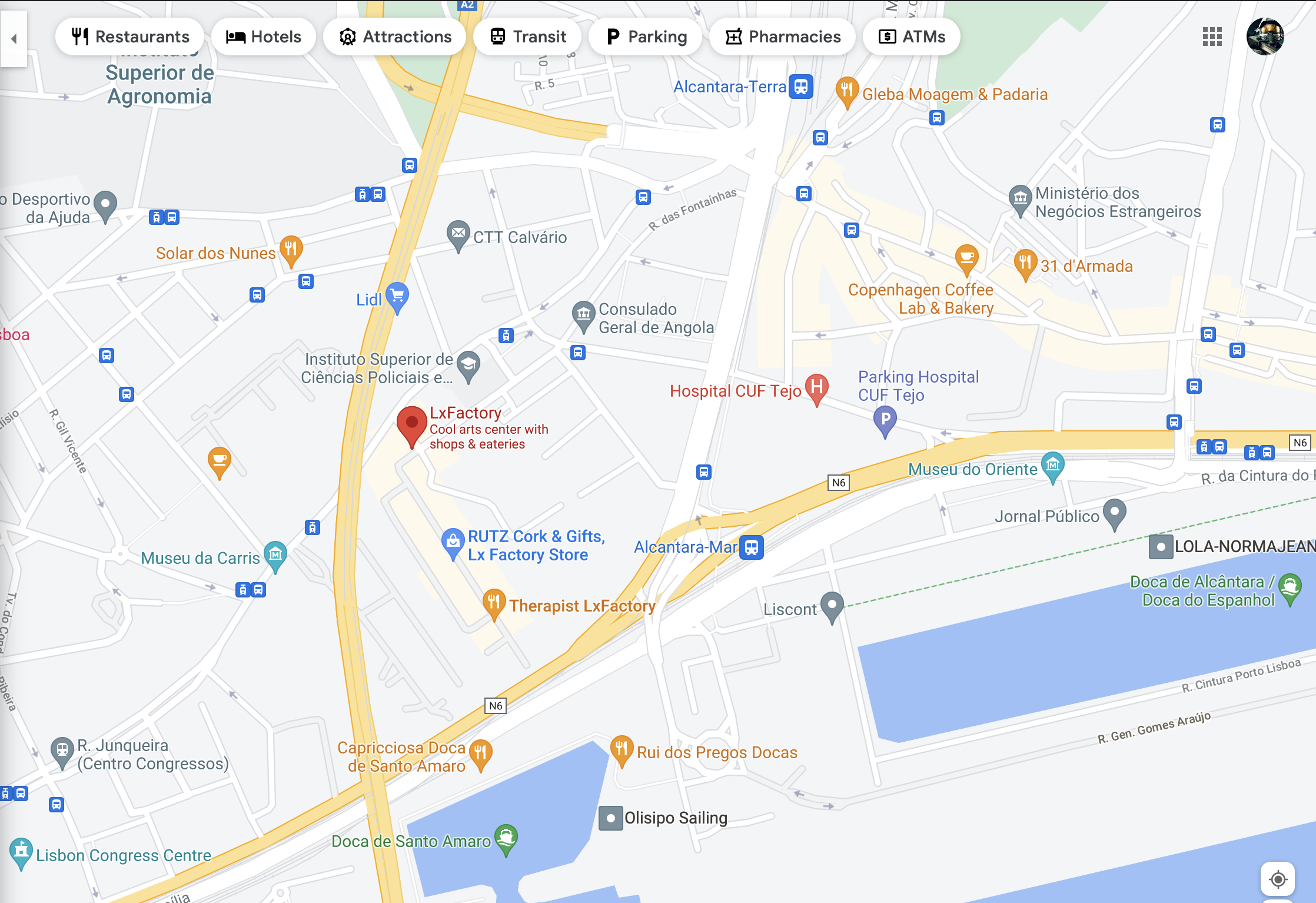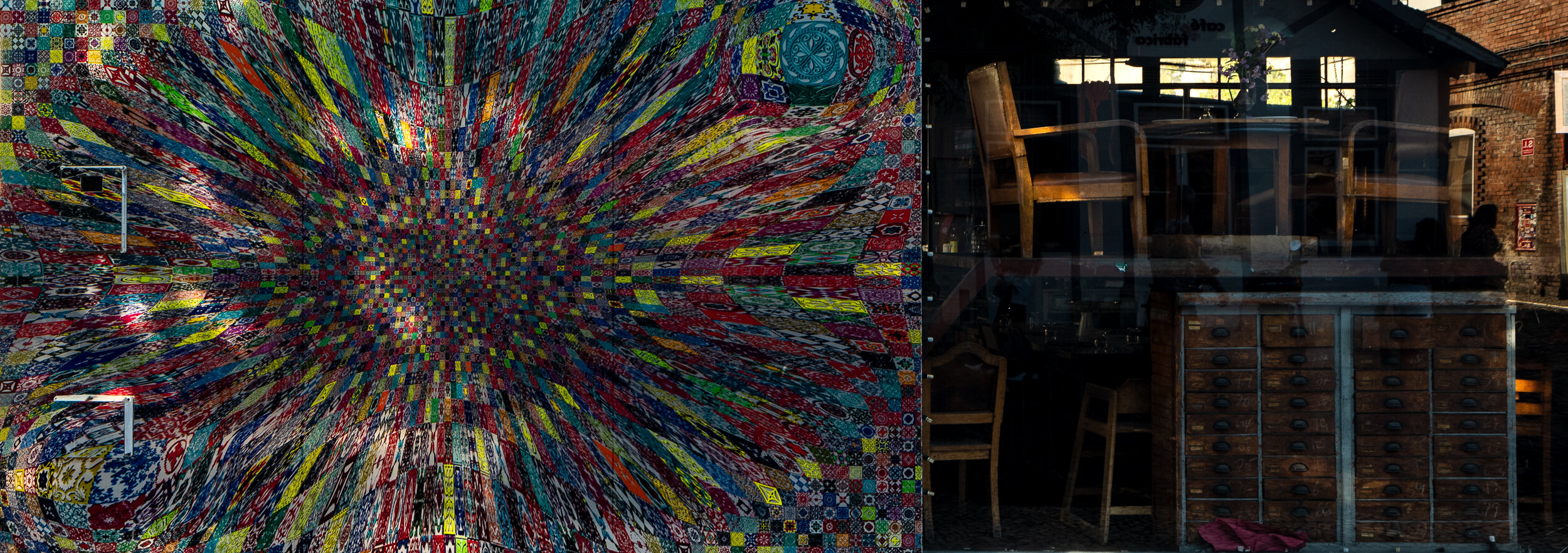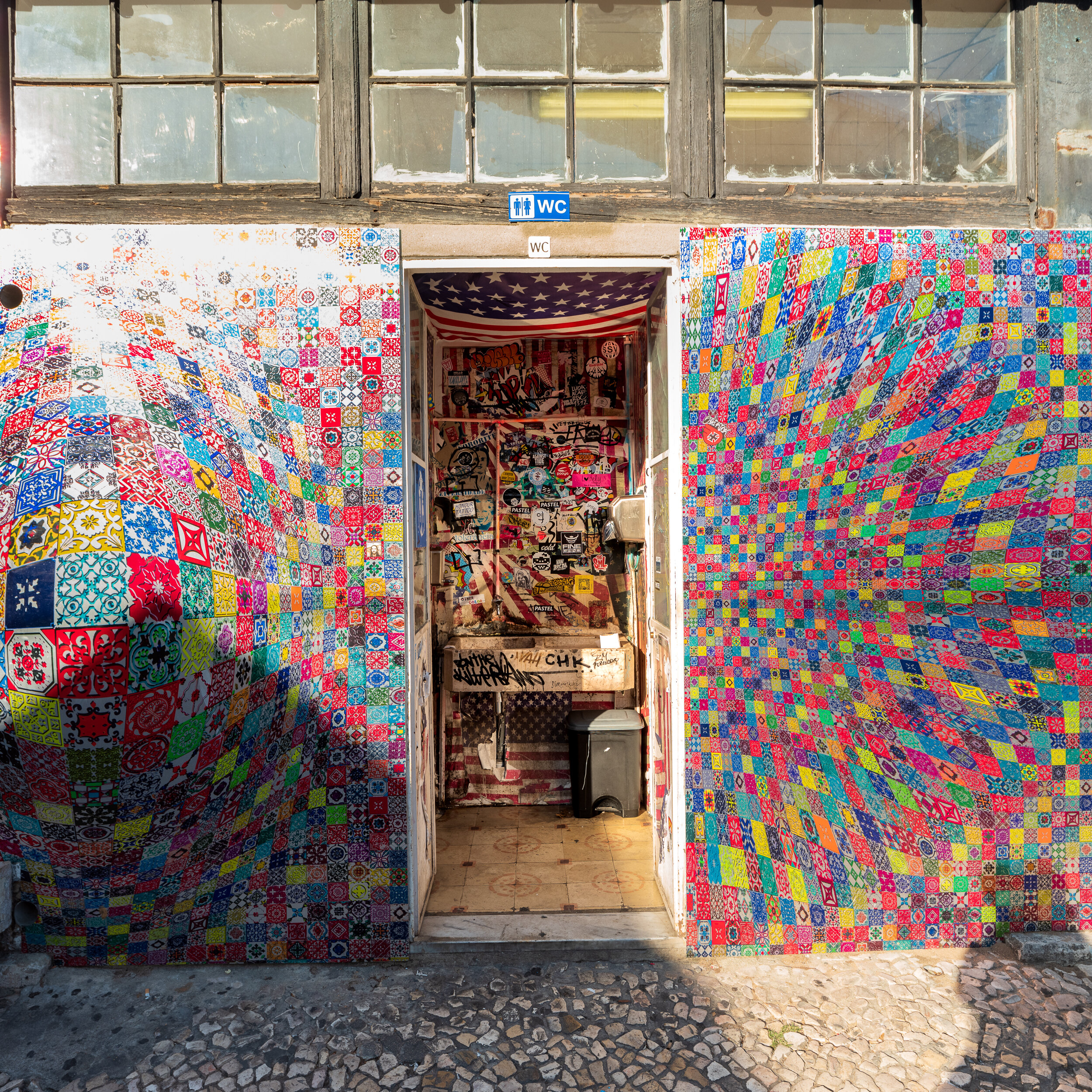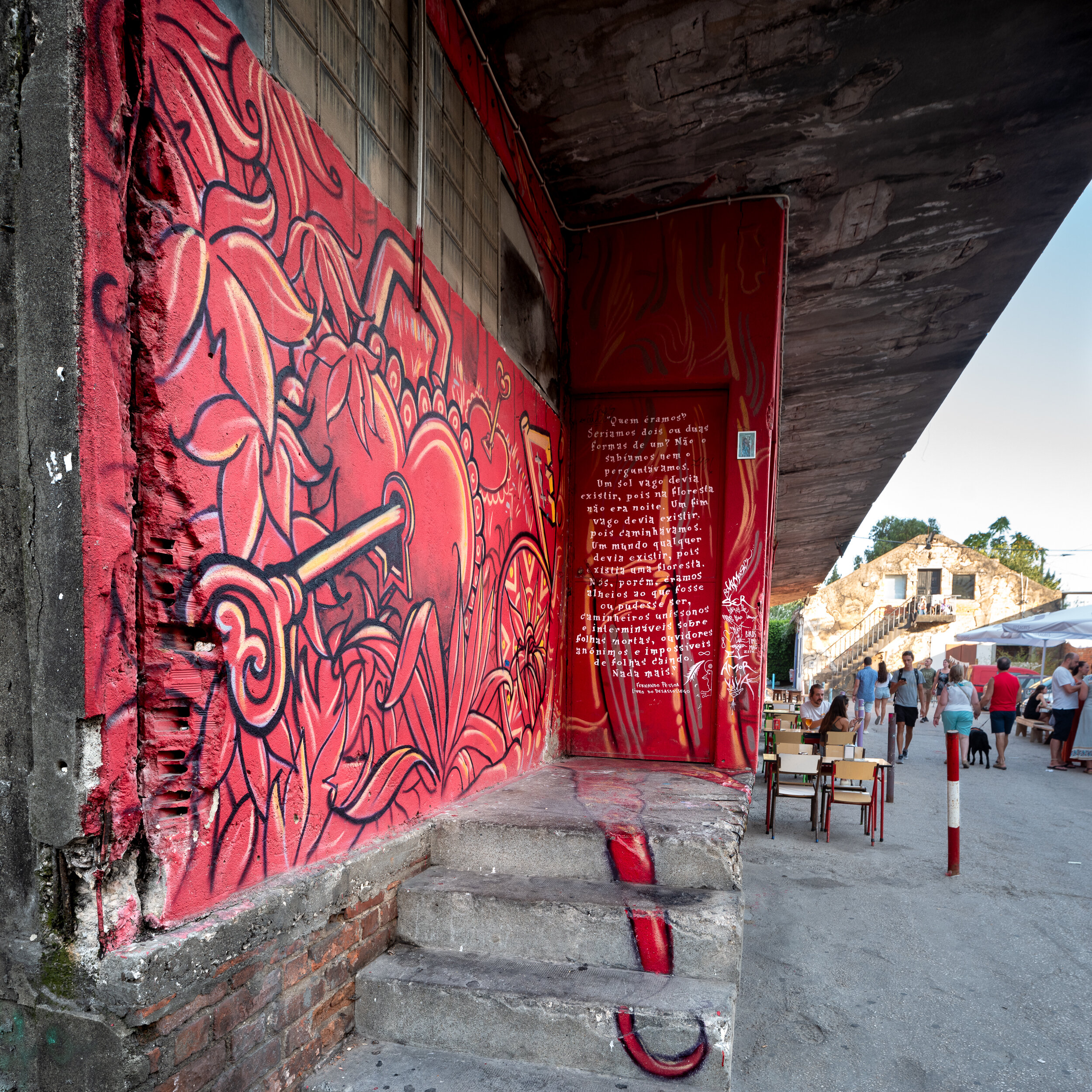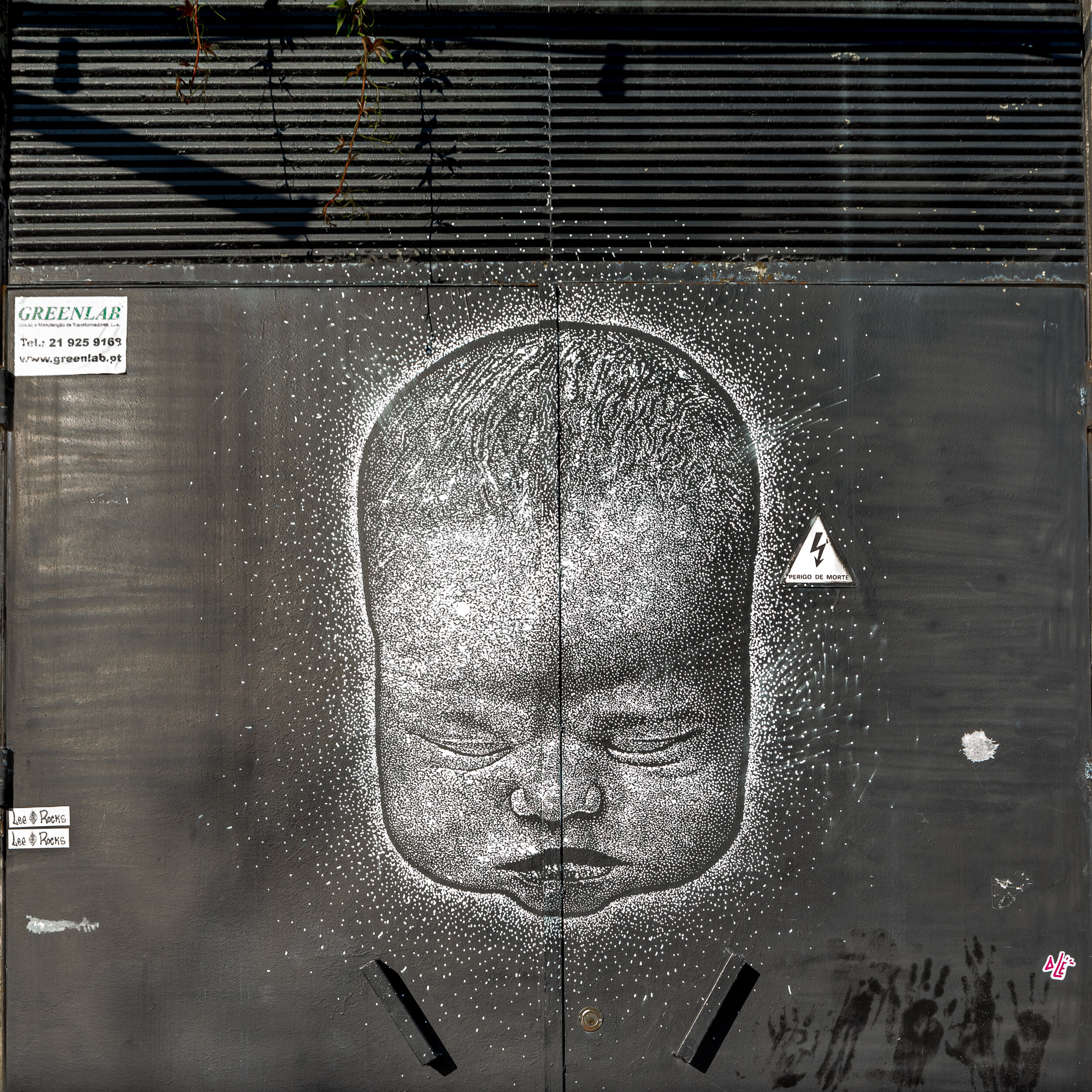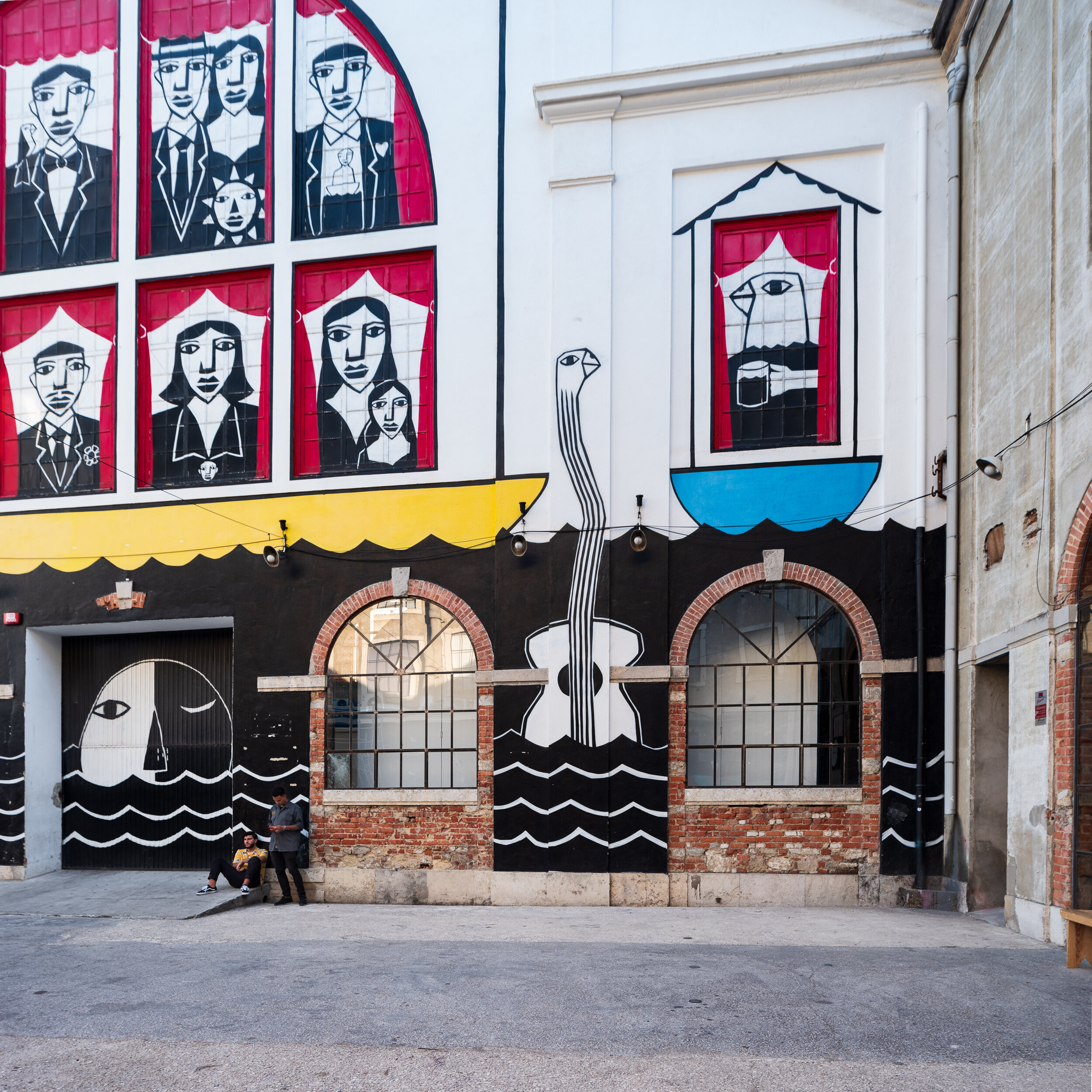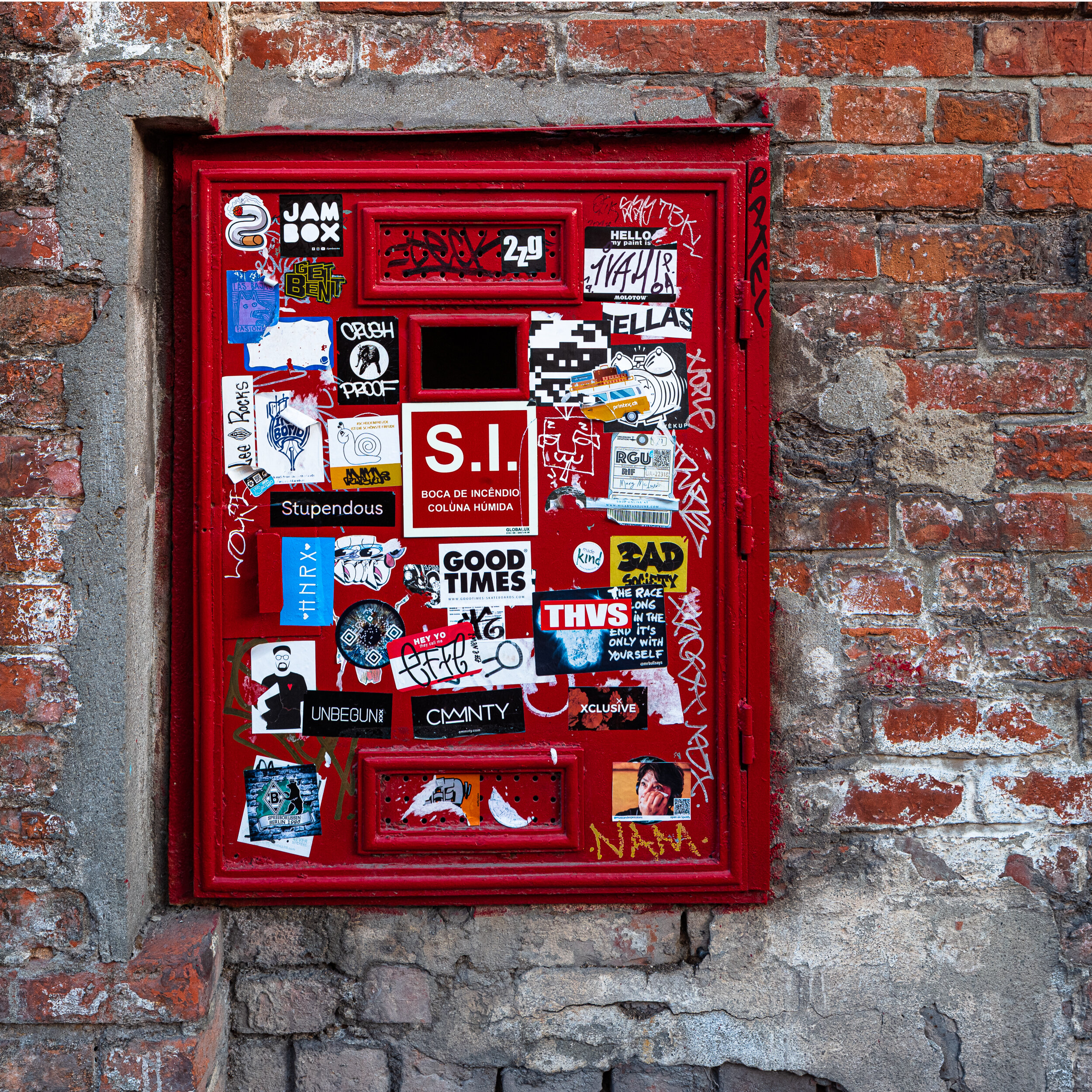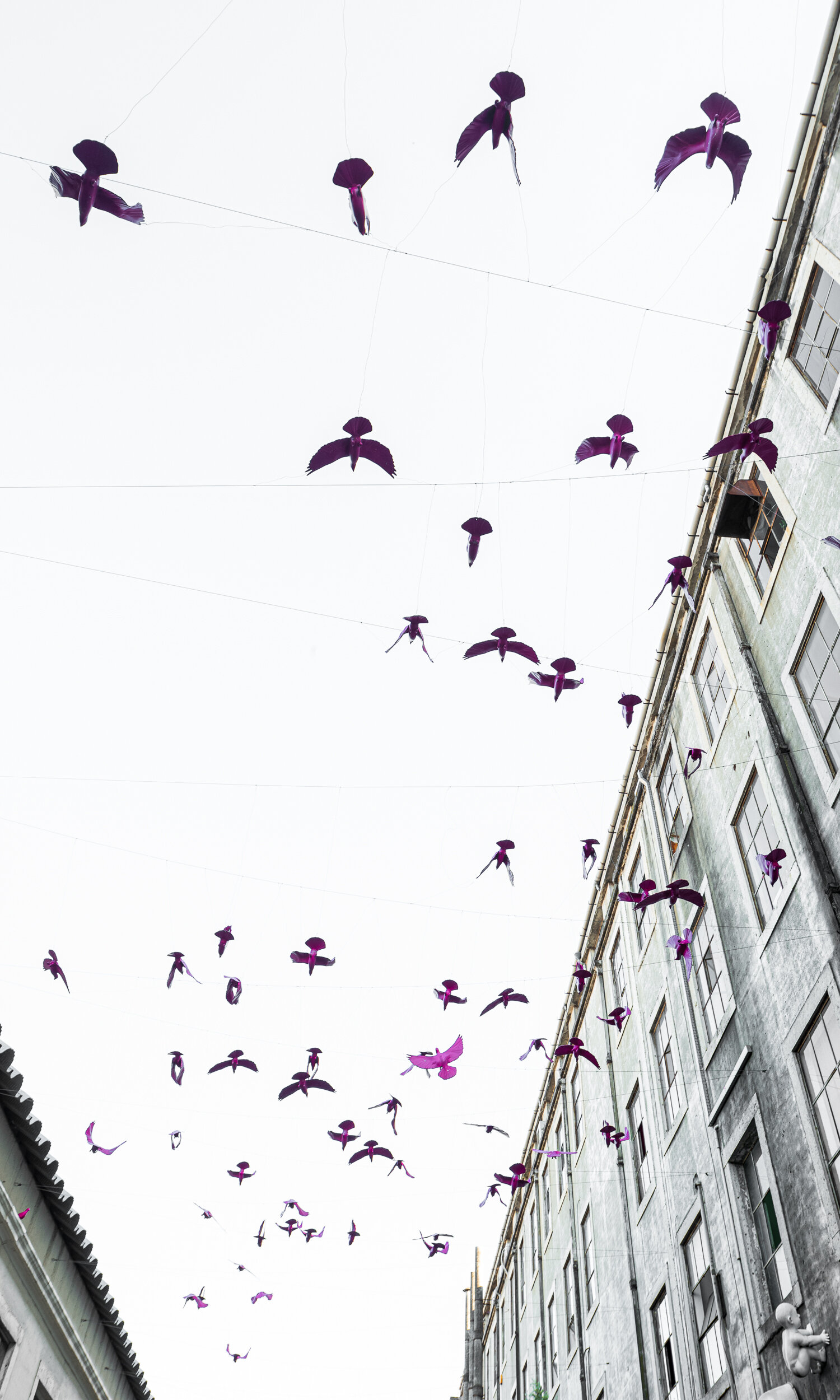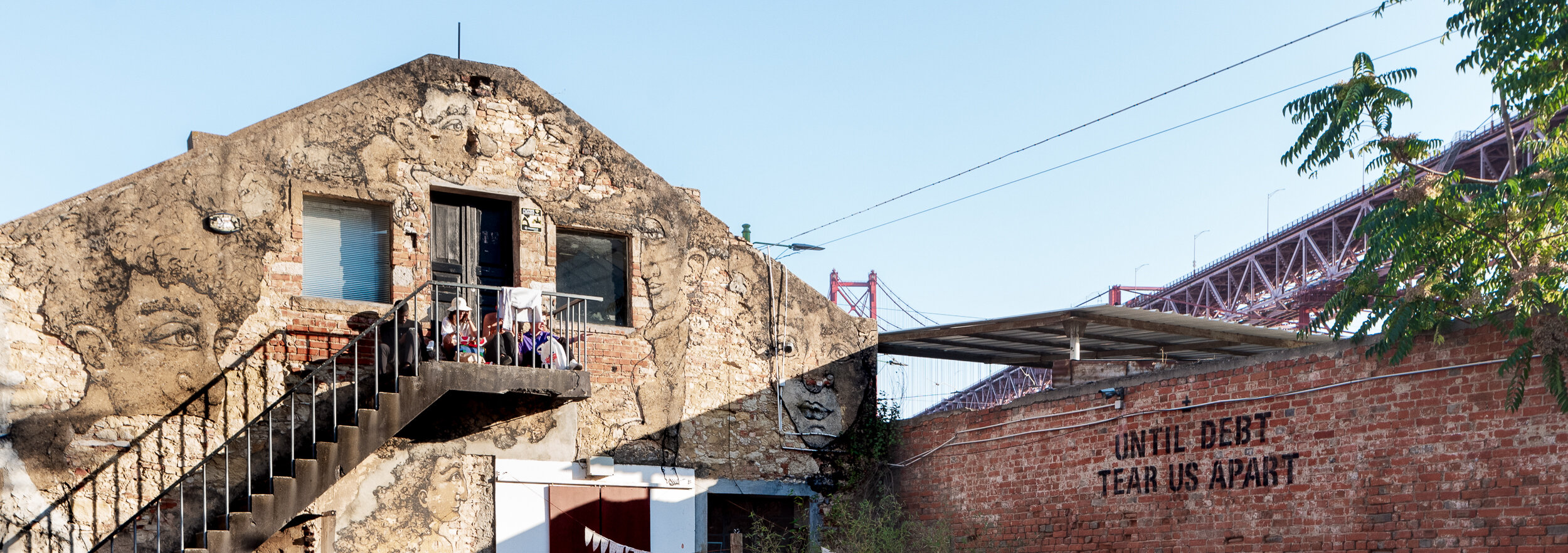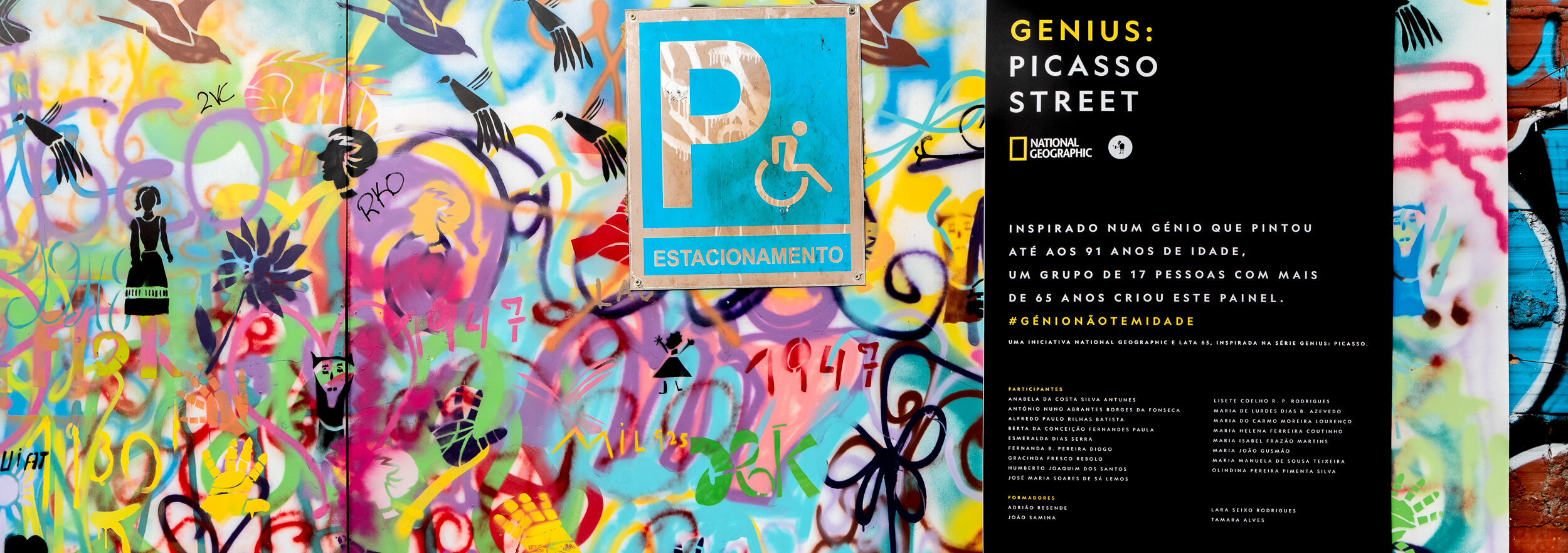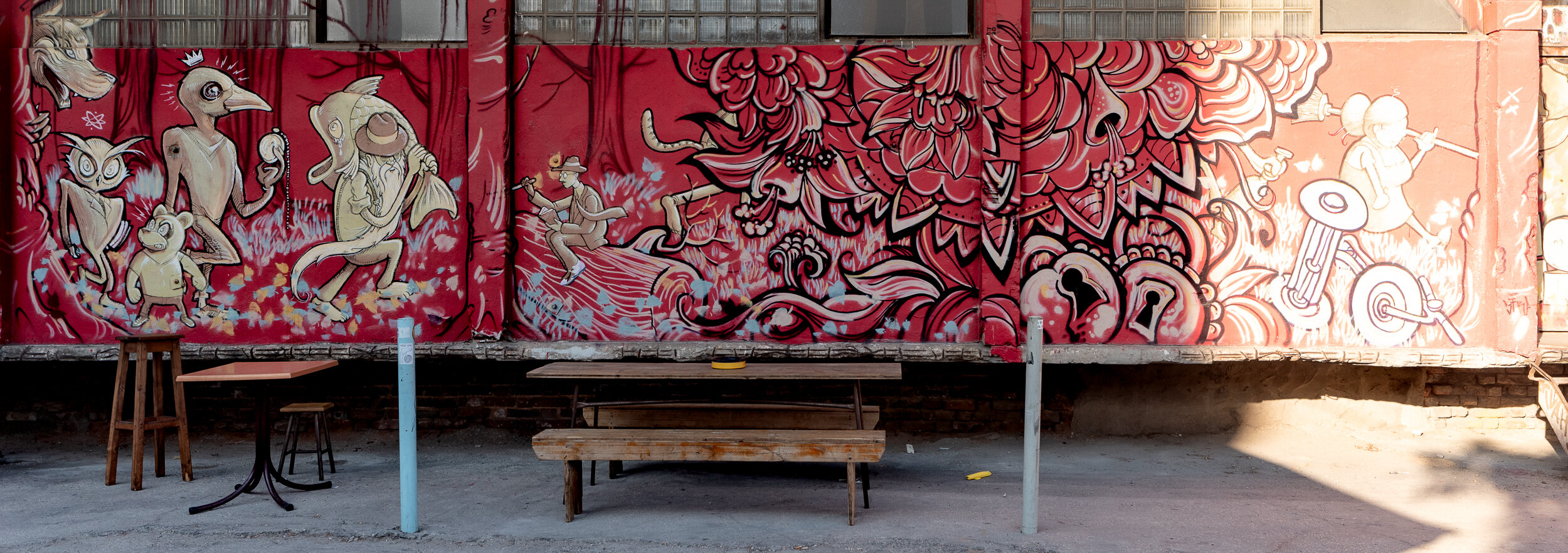LX Factory Lisbon, Portugal
If the Germans had not declared war on Portugal on 9th March 1916, would we have LX Factory today?
There is a connection between these two seemingly disconnected events. One can indeed trace almost any occasion today to any other occurrence in the past. Take a piece of paper, draw several points on it, crumple it a few times in separate ways, and insert a sharp needle through any of the visible-points. You will discover that some of the points on paper will be pierced that were not linearly connected – just like the war in 1916 and this place today. Philosophers like Michel Serres conceptualize the shape of the time similarly.
Thus, whether by historical flow; happenstance, or strategic planning; the events such as the declaration of war between Portugal and Germany in 1916 inevitably led to the LX-Factory as it is today: a bustling community of startups, restaurants, art studios, bars, coffee shops, even a pretty bookstore, and a weekly flea market.
There is an artistic heart that beats in this place. The expression of visual arts is embedded in its DNA and expressed on its various surfaces – walls and waste bins alike. There seems to be a deliberate decision – may be strategic, perhaps an artistic choice, or maybe an intelligent business decision, to leverage the history and the industrial aesthetics to turn the old and languishing remnants of an abandoned manufacturing factory into a hip destination. Whatever the motivations, this works, as evidenced by the crowds of people who visit this place.
The official explanation of starting the war with Germany was to maintain the British alliance, even though this had already caused headaches for the Portuguese in Angola while keeping supply lines for the Brits. Nonetheless, the coalition endured; Portugal seized the German ships in Portuguese territory, leading to the subsequent dispatch of the Portuguese Expeditionary Corps. An officer and a journalist Andre Brun had a more romantic version of reasons for going to war, expressed as a means to achieve national grandeur, in his poem, Sant’Ana e Portugal, published in the Lisbon press on 25 June 1917, Mr. Brun wrote:
My Portugal! Do you see, yonder, that line
Of fire and slaughter? There should you be,
It is there, Portugal, that you will find
Your right to a place in the world,
The world of tomorrow, being made,
To the roar of the cannon, their tremendous noise.
Portugal did not achieve the right place globally, but the ensuing crises and war exacerbated economic problems. This was referred to as “the crisis of 1917,”. These challenging times led to the closure of a massive fabric and weaving factory – Companhia de Fiação e Tecidos Lisbonense – established in 1846. The abandoned place was acquired in 2008 and was turned into what we now know as the LX Factory, and it was inaugurated in 2012 on the current 23.000 square meters of an industrial site.
Since then, the whole area has blossomed into a must-visit destination in Lisbon. If you want to get there, this is where you will find it:
LX Factory | Former industrial complex turned cultural hub | R. Rodrigues de Faria nº 103, 1300 Lisbon, Portugal | Open every day 6:00am - 4:00am (view online for individual shop hours) | +351 21 314 3399 | lxfactory@mainside.pt | www.lxfactory.com |
This place was everything I thought it would be and some more. I sat down, right next to a funky bathroom at the entrance, and re-read the history of the place and how it came to be. The story has a nice arc of rise and fall. It was established and blossomed because of industrialization. Factory fell to fire in 1814; rose again but with a new “English-style” fire-proof design in 1819; fell yet again as it went out of business in 1917, and stayed abandoned and forgotten. Yet it rose again like a phoenix from ashes into its current incarnation: the LX Factory in 2008/2012.
LX Factory is a curious mix of artifacts that occasionally border on kitschy yet avoid becoming so by the sincerity and abandon with which they have been put on display. These artifacts become the part of the set itself on which the human drama unfolds: aspirational startups, chefs experimenting with food and other with brews; and the cool-hip, and by now well-advertised vibe brings both the genuine connoisseurs of all things artistic, onlookers, curious folks and yes the archetypal tourists who are after their perfect newest Instagram picture. The result is that people of creative bend create fun and interesting thing. There is a market for that – physically in the form of LX Factory itself – and the market in an economic sense thanks to the hordes of people who flock to this fantastic place. Regardless of their motives, these visitors keep this excellent place bustling and growing.
Naive-idealism, Capitalism, and curious visitors are all attracted to the Bohemian-Hipster vibe and collectively make up a modern triumvirate. Not unlike The Moirai (The Fates), the three goddesses of destiny: Clotho, Lachesis, and Atropos. The Clotho – the one who spun the thread of life – might well be the artistic spirit that resides within the larger LX Factory ethos; the Lachesis – one that measures the spun cloth – the capitalistic undercurrent to make a buck; and finally all the visitors and customers like the Atropos – the one who cuts the thread to end a life – are the lifeline of this place.
““We worship perfection because we can’t have it; if we had it, we would reject it. Perfection is inhuman, because humanity is imperfect.””
Follow the Three RES’s on display here for an awesome life: RESpect for self | RESpect for others | RESponsibility for all of your actions
This is my favorite art-piece on display. Please checkout the artist’s other work. According to the artist statement, Misterpiro likes to work with color and light. He shares his vision thusly:
In short, modifying spaces, working with colour and light, creating murals that are full of delicacy in noisy surroundings and works that are more saturated in calm spaces. Allowing myself to be led by chance and impulse but always paying attention to detail and aesthetics. Trying to make my work evoke a feeling more than a reflection.
https://misterpiro.com/about/
Fernando Pessoa’s The Book of Disquiet: Could there be a better choice for a source for an inscription for a mural in LX Factory?
Who were we? We would be two or two Shapes of one?
AND
A vague sun should exist, because in the forest It wasn't night
“I am offering you this book because I know it to be both beautiful and useless. It teaches nothing, preaches nothing, arouses no emotion. It is a stream that runs into an abyss of ashes that the wind scatters and which neither fertilise nor harm — I put my whole soul into its making but I wasn’t thinking of that at the time, only of my own sad self and of you, who are no one.”
Fernando Pessoa: The Book of Disquiet
Fernando Pessoa wrote this book, perhaps to rid him of his anxieties, and decided to lower readers' expectations. In his own words, he put his whole soul into writing this book. In some ways, the entire LX Factory seems like that: people have put their souls into making this fantastic place – not unlike The Book of Disquiet – yet they have done it in unpretentious ways. It’s a catharsis at a civic level for the whole community.

